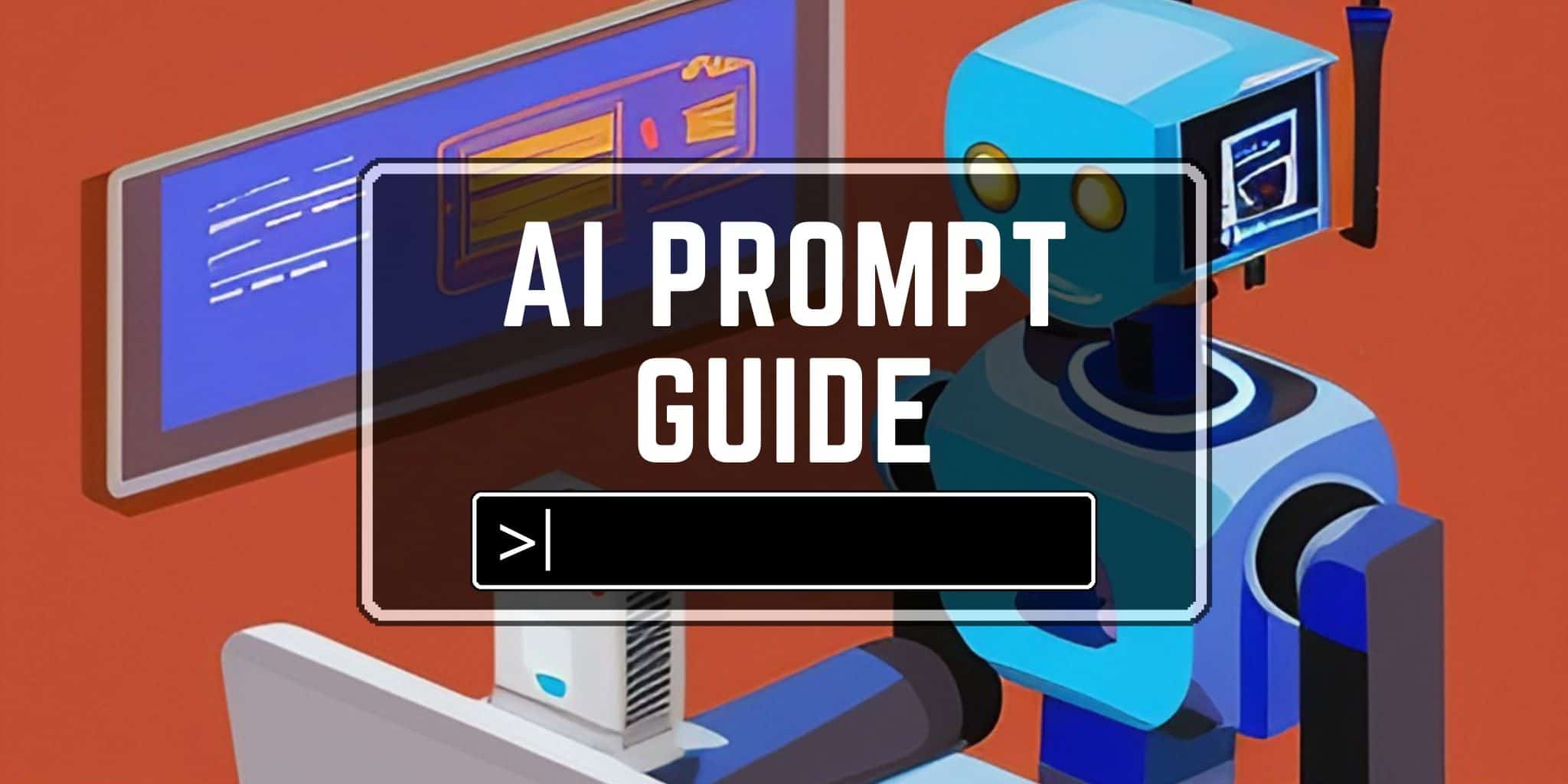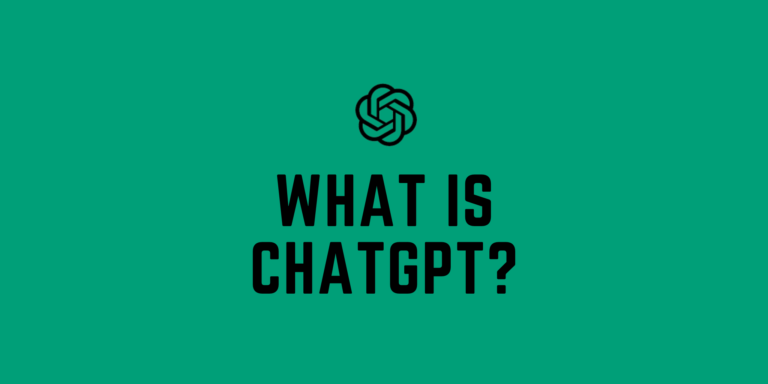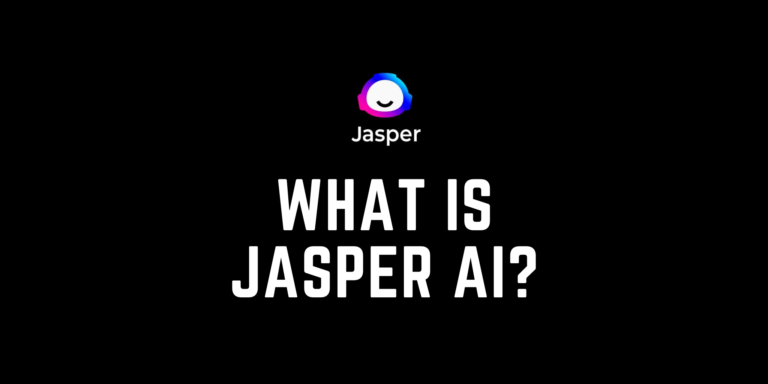AI Prompt Guide: A Step-by-Step AI Output Optimization Tutorial

If you clicked on this article, you have probably dipped your toes into the world of AI prompts before. Using generative AI, you are probably wondering why the AI output sometimes is not what you wanted. Some of the results might have been outright garbage. So, how do we get those AI tools and chatbots to produce actual helpful content?! That’s the main focus of this AI Prompt Guide. Stay tuned as we will explore what an AI prompt is and what makes up an efficient prompt, followed by a step-by-step guide for AI output optimization. This AI Prompt Guide will help you to finally make use of those AI tools, like ChatGPT and jasper.ai, that everyone is talking about.

After all, text and image-generating AI was promised to be something that communicates more like us and less like robots. But quite frankly, we are not there yet. Generative AI is still just following patterns. So, using “normal” everyday natural human language for prompting an AI will sometimes but not always lead to your desired end goal. In this AI prompt tutorial, we will learn about the patterns that AI is currently using (as of 2023) to optimize our prompt output.
Spoiler alert: we will still use natural language, but we will follow a certain sentence and logic structure.
Understanding AI Prompts
You can compare AI prompts to asking “a stranger” a question. They will probably give you an answer. Whether that answer is helpful or not is determined by various factors. We can continue our conversation to lead it in a certain direction. That’s basically what AI prompts are. Our prompts are the things we say to keep the chat going.
Now, what’s the big deal about prompts? They guide the AI and help it understand what we want. They guide it to give us the answers or responses we’re looking for. But unlike our friends or even acquaintances, the AI doesn’t know anything about us (yet). They are like random “strangers”. It can’t derive conclusions from body language or interactions from way past then (at least not as of 2023).
That’s why we have to be super specific and precise with our instructions. Think of it as an introduction to someone you meet for the very first time. That’s why Effective AI Prompts are clear, specific, and complete.
Setting the AI’s identity to guide the AI in a specific direction
Unlike meeting a “random” person for the first time, we can actually determine “who” that AI is supposed to be. We can set the AI’s identity by commanding the AI to be whomever we want it to be. For example, we can start with: “Act as a marketing professional specialized in targeted online advertising”. This determines “who” you are talking to. You can then continue with our introduction.
Getting past this initialization or introduction phase, we can keep communicating with the AI so it can get to know our goal better. This finetuning of the responses is sometimes referred to as “AI Output Optimization”.
The Anatomy of an Effective AI Prompt
Since I’ve already spilled the beans on the general idea of an effective AI Prompt, let’s have a closer look at each of the conditions we need to keep in mind:
1. Clarity
Your prompt should be like a road map for the AI. It should clearly point the AI in the direction you want it to go. Let’s say you’re using an AI to write a story. A clear prompt might be: “Act as a story writer. Write a story about a brave dog who saves his owner.” Here, the AI knows exactly what you want: a story about a brave dog and his owner.
2. Specificity
This means it tells the AI exactly what kind of response you’re looking for. If you’re too vague, the AI might get confused. Think about asking someone for directions. If they’re too vague, you might end up lost. But if they’re specific, you’ll know exactly where to go.
3. Completeness
You need to provide the AI with all the information it needs to create a good response. It’s like giving someone a complete set of instructions to build a LEGO set. If you miss out on any steps, they might not be able to finish the model or build something completely unexpected. But if you give them all the steps, they’ll be able to build it perfectly.
Creating Effective AI Prompts is a skill that takes practice. So, as we go through this AI Tutorial together, don’t be afraid to experiment and try out different prompts. You might be surprised by how different your output gets when changing your instructions just a little!
Step-by-Step AI Prompt Guide with examples
Step 1: Understand your goal and set the AI’s identity
Before you start, knowing what you want from the AI is essential. Are you looking for a short answer, a piece of code, an engaging story, a poem, or a list of ideas? This goal will shape your prompt and determines which shape the AI should take (i.e. “who” you are “talking” to). We basically set the AI’s identity. For example, if you want a story about a superhero cat, your prompt might start with “Act as a children’s author. Write a story about…”
Step 2: Be clear and specific.
AI can mimic human language, but it doesn’t understand it like we do. Hence, your prompts need to be clear and specific. Going back to our superhero cat, we might add more details like, “…a superhero cat named Whiskers who has the power to fly.”

Step 3: Set the tone.
This is all about how you want the AI to sound. Should it be formal or casual? Funny or serious? Your prompt can suggest this tone. Maybe our superhero cat story is supposed to be funny, so we could add, “…and always gets into hilarious situations.”

Step 4: Provide relevant information.
Most AI tools, algorithms and models are trained on certain data. For example, ChatGPT has a certain cut-off date when they stop training it with data from the internet. So, providing it with the most recent information that is relevant to our objective helps it to generate a more desirable output. We can also provide additional information to add to our specificity. The more detailed we get, the more likely we will receive the AI output we are looking for.
Step 5: Experiment and revise.
You might not get it perfect the first time, but with practice, you’ll get better and better at understanding the pattern your AI tool is following. So, try out your prompts, see how the AI responds, and then tweak your prompts based on that. Maybe you find that the AI writes funnier stories when you add more detail about the funny situations Whiskers gets into.
Strategies for Optimizing AI Output
Re-instruct the AI: If the output is not as desired, copy-paste your old command and adjust it a little. If your AI tool allows you to follow up on your previous prompt (like in ChatGPT) you can even ask it to regenerate the answer with additional instructions. For example: “Rewrite the story from above, but this time, make sure to add a description of Whisker’s home”.
Provide feedback: Some AI systems let you rate or give feedback on responses. The AI uses this feedback to try and do better next time. So if you give useful and honest feedback, you can help the AI learn and improve.
Experiment with different strategies: There’s more than one way to bake a cake, and there’s more than one way to write an Effective AI Prompt. Try out different types of prompts, like questions, commands, or even just a single word. See what works best for you and the AI.
Add your own ideas: AI is a tool. It’s there to help you, but it doesn’t replace your own creativity and ideas. So don’t be afraid to take the AI’s response and build on it, change it, or even ignore it and try something else. You’re the master chef here, and the AI is just your assistant in the kitchen.
By using these strategies, you’ll be well on your way to mastering AI Prompts and Optimizing AI Output. So keep practicing and keep exploring.
FAQ
Summary
Generative AI can be fascinating and frustrating at the same time. The main source of frustration usually comes from output that doesn’t correspond to our expectations. As we learned in our AI Prompt Guide, we need to provide the AI with a certain pattern of information so it can produce the output we want from it. Our AI Prompt should contain well-structured instructions that are clear, specific and complete.
In our step-by-step tutorial, we emphasized the importance of setting the AI’s identity. Although we can just start chatting with an AI, it’s best to make sure the AI knows “whom” it should pretend to be.
Secondly, we need to be very clear and specific about what we want. The more information we provide, the better the AI can understand the context.
And lastly, don’t be afraid to reiterate. Changing our instructions just a little bit can lead to vastly different outputs. As much as AI is a powerful tool, it’s not a replacement for human creativity and critical thinking. Use the outputs and modify them into your own content. Or use it to optimize your next prompt.
As we tread further into the era of AI, it’s important to realize that creating effective prompts and optimizing AI output is a skill acquired over time. So keep practicing, experimenting, and refining your craft. The journey of mastering AI prompts is about evolving alongside these incredible tools, learning their quirks and capabilities, and unlocking their potential to serve our creative and professional pursuits.
If you’re craving more knowledge, tips, and insights into the world of AI tools, be sure to visit our website, aitoolinsights.com. We consistently update our content to ensure you’re armed with the latest information and practical advice to navigate the AI space confidently. Join us at AI Tool Insights, where the journey to mastering AI continues!





